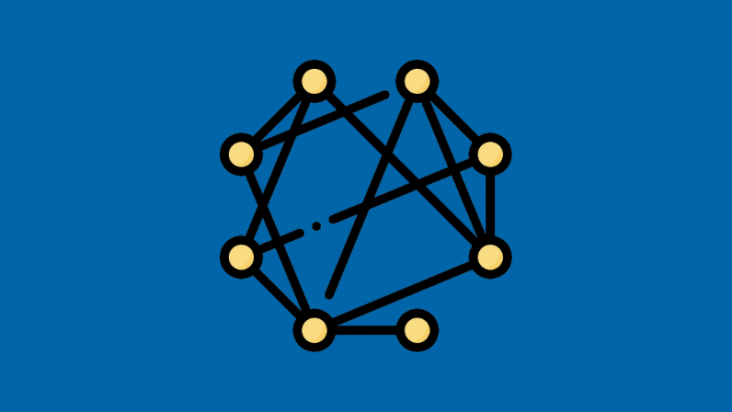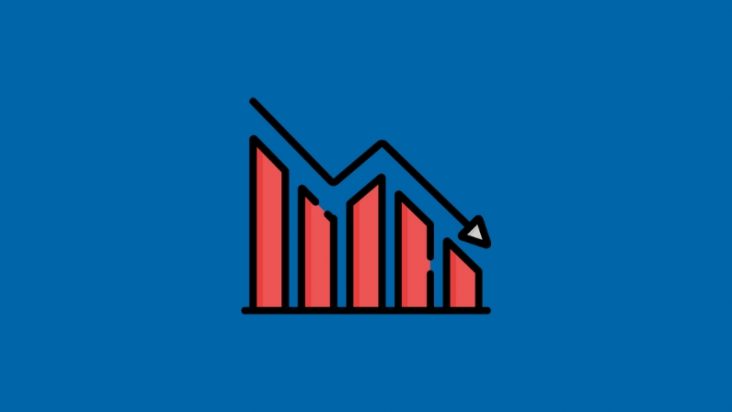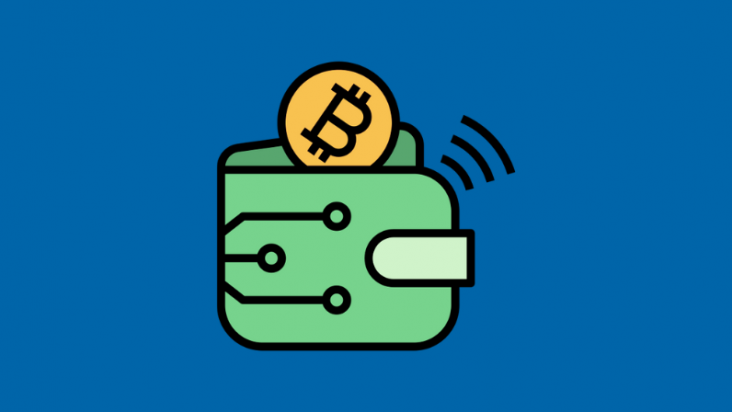Best Data Visualizations: Examples for Inspiring [2024]
At its core, data visualization uses our inherent ability to process visual information more efficiently than text or numbers. By converting data into charts, graphs and maps, it allows users to quickly capture complex patterns, trends that may be overlooked in tabular data or long reports. Such direct visual perception contributes to faster decision-making, which is an important advantage in a rapidly changing environment.
When to Use Data Visualization
This type of presentation of materials is becoming more popular every year. The results of modern research are very often demonstrated using the nominal method.
- Clarifying Complex Information: Whenever you’re faced with complex datasets or intricate relationships within the data, visualization can simplify these complexities. By translating numbers and metrics into visual formats like charts and graphs, we enable viewers to grasp difficult concepts or identify trends at a glance.
- Enhancing Decision-Making: In business or research, decisions often hinge on the insights drawn from data analysis. It can highlight critical data points, trends, assisting stakeholders in making informed choices based on clear, show evidence.
- Storytelling with Data: There are moments when the data itself narrates a compelling story. Through visualization, we can craft narratives that engage and inform the audience, whether it’s showcasing progress over time, comparing scenarios, or highlighting the impact of certain events or policies.
- Engaging Your Audience: Plain numbers on a spreadsheet may be dull and disengaging. Visibility influences our innate visual perception skills to draw attention and generate interest. Pictures make information not only more digestible but also more engaging.
- Identifying Trends and Patterns: One of the most powerful aspects of visualization is its ability to reveal trends and patterns that might not be evident from raw data alone. This is particularly valuable in fields like market research, science, and technology, where understanding these trends can lead to breakthroughs and innovations.
In essence, data visualization is a tool of immense value across a spectrum of fields. It bridges the gap between information and decision-making, transforming raw numbers into visual stories that inform, persuade, inspire.
Amazing Examples of Data Visualization
Global Climate Change Visualization
Designed to communicate the urgent issue of global warming. In this case often utilizes temperature materials, ice cap melting rates, carbon dioxide concentration levels over decades or centuries. By presenting it through color-coded maps or animated timelines, they starkly illustrate the rising global temperatures and their impact on natural ecosystems. The aim is to inform the public and policy makers about the severity of climate change, as well as to stimulate international environmental action.

COVID-19 Spread Maps
Created in response to the global pandemic, these real-time maps tracked the spread of COVID-19 cases, recoveries, fatalities by region. They were instrumental in informing public health strategies, travel restrictions, community responses. By visualizing material on an interactive global map, these examples made the pandemic’s scale and speed comprehensible, highlighting hotspots and the effectiveness of containment measures.

World Population Growth
Creators depict the exponential growth of the global population over time, using line graphs, growth curves, or animated maps. They are created to shed light on demographic changes, urbanization trends, increasing strain on resources. This information is crucial for planning sustainable development, infrastructure, and resource allocation to meet the growing population’s needs.

Internet Live Stats
Showcasing the dynamic nature of the digital age, these visualizations present real-time data on internet usage, including the number of websites, emails sent, social media posts, online transactions. They illustrate rapid growth of the internet, emphasizing its role in modern life and the economy. These stats are used by technologists, marketers, policymakers to understand digital trends and to develop digital infrastructure.

Flight Traffic Patterns
Utilizing data from flight tracking services, these map out the routes and density of air traffic globally, often in real-time. They reveal the hubs of global connectivity, peak travel times, and the impact of events like holidays or natural disasters on air travel. Airlines, airports, logistics companies use this data to optimize routes, improve safety, and enhance passenger experiences.

Sports Performance Charts
These charts analyze and compare performance metrics of athletes or teams across different sports, using statistics like speed, accuracy, and endurance. The product is aimed at helping coaches develop a training strategy, as well as improving their performance. Sports performance graphs are used to interact more interactively with sports data by discussing projected results.

Social Media Demographics
Infographics and interactive charts that break down the user demographics of various social media platforms by age, gender, location, interests.The presented material helps marketers analyze their audience, adapt content to it, as well as effectively develop a strategy for their social media campaigns.They also highlight impact of social media across different segments of the population.

Economic Indicators Dashboard
These dashboards compile and visualize key economic indicators such as GDP growth, inflation rates, employment figures, and stock market performance. Created for economists, investors, policymakers, they provide an at-a-glance view of a country’s economic health and trends. This information is pivotal in making informed decisions regarding investments, policy-making, and forecasting economic trends.

Health and Nutrition Data Charts
It is a visual representation of information related to public health issues, nutritional trends, and disease outbreaks.These charts are designed to communicate complex health intelligence in an accessible way, aiding in public health campaigns, policy formulation, individual health decisions. They can illustrate the spread of a disease, the effectiveness of health interventions, or trends in health behaviors, such as diet and exercise.

Election Result Infographics
These infographics demonstrate complex election data, including vote counts, demographic breakdowns of voters, historical voting patterns. They are created to make election results more accessible to the public, providing clear insights into the democratic process and the factors influencing election outcomes. Such visualizations can foster a more informed electorate, facilitating discussions about policy preferences.

Transit Maps
These schematics, such as the iconic London Underground map, efficiently communicate complex transportation networks. By distilling intricate routes and connections into simplified, color-coded lines, they guide commuters through busy urban transit systems. Their design principles have influenced information design in various fields.

Astronomical Charts
Utilized in astronomy, these charts map out stars, constellations, and celestial phenomena in a digestible format. They transform vast, complex astronomical observations into navigable maps, aiding both amateur stargazers, professional astronomers in exploring the night sky.

Genome Sequences
In genetics, visual representations of the genome sequencer synthesize huge amounts of genetic information into coherent structures.These illustrations help researchers identify patterns and anomalies in DNA, advancing our understanding of genetics, evolution, and disease.

Music Genre Maps
These creative renditions categorize different music genres and their interrelations in a visually engaging way. By depicting genres as territories in a stylized map, they offer insights into the evolution of music and the connections between diverse musical styles.

Digital Ecosystem Infographics
Infographics depicting digital ecosystems illustrate the interplay between various online platforms, apps, services. They encapsulate the complexity of digital interactions and dependencies, providing clarity on how digital products coexist and compete in the virtual space.

Best Data Visualization Tools
- Tableau: Tableau is a top choice for creating interactive visuals. It’s easy to use, letting people drag records and drop it into the platform to make complex charts and graphs. Tableau works with many data types, from simple spreadsheets to big databases. It’s great for businesses of all sizes to find useful insights in their data.
- Microsoft Power BI: Microsoft Power BI is great for companies already using Microsoft products. It connects well with these services, offering strong data analysis and visualization options. Users can make detailed reports and dashboards. Power BI’s cloud service, Azure, helps share insights easily.
- Google Data Studio: Google Data Studio is free and turns data into detailed reports and dashboards. It’s great for marketing and web data, working well with Google Analytics and Google Ads. The tool is user-friendly, making it easy for teams to share and understand data.
- QlikView: QlikView is unique for its fast data processing. It’s interactive, letting users dive deep into data to find trends and patterns. The tool’s special data modeling helps reveal hidden insights. QlikView is good for businesses needing deep data analysis.
- D3.js: D3.js is for creating web-based data visuals. It uses web standards like HTML and SVG, giving full control over design. D3.js suits those with coding skills, offering unmatched customization for online data visuals.
- FusionCharts: FusionCharts is a JavaScript charting library with many chart options. It works on all devices, making sure visuals look good everywhere. It’s easy to use, with lots of guides and support, making it accessible to both developers and non-developers.
- Highcharts: Highcharts makes adding interactive charts to web and mobile projects simple. It offers many chart types and designs responsively for different devices. Highcharts is easy to use and includes features for people with disabilities, making data accessible to everyone.
- Sisense: Sisense handles complex data easily, offering an all-in-one platform for analytics and visualization. It’s great for creating interactive dashboards that provide deep insights. Sisense can process data from many sources in real-time, ideal for varied data needs.
- Plotly: Plotly supports many programming languages and has both online and offline plotting. It’s flexible, allowing for simple to complex visuals like 3D models. Plotly’s collaborative features make it perfect for team projects.
- Infogram: Infogram is web-based, perfect for making infographics and charts quickly. It has an easy drag-and-drop interface and lots of templates. It’s favored by marketers, journalists, and educators for turning data into engaging stories.
Types of data visualizations
At the moment, there is a wide range of methods aimed at presenting various kinds of information in the most visual and understandable way. Here’s an overview of some common types of data visualization and their unique attributes:
- Bar Charts: Bar charts are one of the most straightforward types, ideal for comparing numerical values across different categories. Each is represented by a bar, with the length or height of the bar corresponding to its value. Bar charts are particularly effective for showing differences between groups, such as sales performance across different regions.
- Line Charts: Line charts are perfect for illustrating trends over time. By plotting data points on a graph and connecting them with a line, viewers can easily discern upward or downward trends, seasonal variations, or significant changes. They’re commonly used in finance and economics to track stock prices, economic indicators, or company revenues over time.
- Pie Charts: Pie charts offer a visual representation of parts to a whole, dividing a circle into segments that represent different categories. The size of each segment is proportional to its contribution to the total. Pie charts are best used when you want to emphasize the proportion or percentage of categories, such as market share or budget allocations.
- Scatter Plots: Scatter plots display individual points on a two-dimensional graph, making them ideal for identifying relationships or correlations between two variables. Each axis represents a different variable, and the position of each point on the graph indicates its values. Scatter plots are often used in statistics and science to explore potential connections between variables.
- Heat Maps: Heat maps use color gradients to represent materials values in a matrix or grid, with different colors indicating different value ranges. They are useful for visualizing complex information with multiple variables, highlighting patterns, and variations across the data set. Heat maps are frequently used in areas such as geography, to show population density or temperature variations, in web analytics, to show user activity on a webpage.
- Histograms: Histograms are similar to bar charts but are used specifically for showing the distribution of a dataset across different bins or intervals. They help in understanding the underlying frequency distribution (e.g., normal distribution) of a dataset, making them valuable in statistics for identifying skewness, peaks, and outliers.
- Area Charts: Area charts are similar to line charts but with the area below the line filled with color or shading. They emphasize the magnitude of values over time, making them useful for showing cumulative totals or comparing multiple quantities stacked on top of each other.
- Treemaps: Treemaps display hierarchical data as a set of nested rectangles, with each branch of the hierarchy represented as a rectangle, which is then tiled with smaller rectangles representing sub-branches. The size and color of each rectangle can represent different quantitative variables, making treemaps an efficient way to convey complex hierarchical data in a compact space.
- Bullet Graphs: Bullet graphs provide a clear visualization of performance data by comparing a primary measure to one or more other measures and contextual benchmarks, often displayed in the context of a single, simple graphic. Ideal for dashboards, they convey a lot of information in a small space without overwhelming the viewer.
- Sankey Diagrams: Sankey diagrams are specialized charts for showing the flow of resources or information between multiple entities. They are characterized by their flowing, organic shapes, where the width of each flow is proportional to its quantity. Sankey diagrams are particularly useful for visualizing energy, material, or cost transfers in a process.
Each of these types serves a specific purpose, and choosing the right one depends on the nature of the data and the insights you wish to convey. Understanding these types and their best applications can significantly enhance the effectiveness of data communication.
Advantages Over Traditional Methods
Compared to conventional presentation methods like PowerPoint slides, data visualization offers several distinct advantages.
- Interactivity: Modern tools support interactive elements, allowing users to drill down into specifics, filter materials, explore different scenarios in real-time. This interactivity is absent in static PowerPoint slides, making visualization a more flexible and exploratory method.
- Real-Time Data Integration: Various devices can often pull in real-time data, ensuring that the information presented is current and relevant. This is particularly important in rapidly changing situations, such as financial markets or social media trends, where outdated records can lead to incorrect conclusions.
- Storytelling: While PowerPoint slides can tell a story through a linear presentation, this method offer a more compelling narrative by showing material in an evolving, dynamic format. This will help to engage the audience more deeply, making the story more impressive and memorable.
- Accessibility: With the rise of different platforms, these tools have become more accessible to non-technical users. They offer user-friendly interfaces and pre-built templates, making it easier to create sophisticated presentations without extensive training in data science or graphic design.
When working with data visualization, it is extremely important to keep your software in mind. It must be ready for any data processing, regardless of their quantity. This article provides a complete description of inspiring examples of successful data visualization, as well as a list of tools that will help organize your materials. Choose the type of visualization that suits you, choose a convenient resource for your work and create spectacular visualizations. We hope that this article was useful to you!







